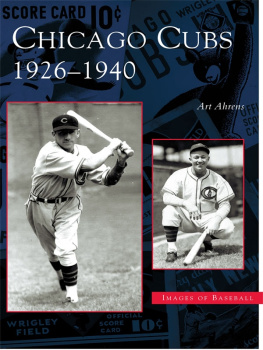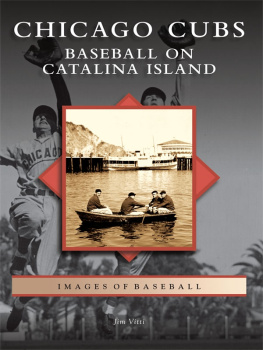Copyright 2014, 2016 by Sam Pathy
All Rights Reserved. No part of this book may be reproduced in any manner without the express written consent of the publisher, except in the case of brief excerpts in critical reviews or articles. All inquiries should be addressed to Sports Publishing, 307 West 36th Street, 11th Floor, New York, NY 10018.
Sports Publishing books may be purchased in bulk at special discounts for sales promotion, corporate gifts, fund-raising, or educational purposes. Special editions can also be created to specifications. For details, contact the Special Sales Department, Sports Publishing, 307 West 36th Street, 11th Floor, New York, NY 10018 or .
Sports Publishing is a registered trademark of Skyhorse Publishing, Inc., a Delaware corporation.
Visit our website at www.sportspubbooks.com.
10 9 8 7 6 5 4 3 2 1
Library of Congress Cataloging-in-Publication Data is available on file.
Cover design by Tom Lau
Cover photos credit: Associated Press
ISBN: 978-1-61321-877-8
Ebook ISBN: 978-1-61321-885-3
Printed in China
To my mom and to the memory of my aunt Alice
Thanks for taking us to Wrigley Field!


ACKNOWLEDGMENTS
I would like to thank the staffs at the following libraries: the University of Illinois at Urbana-Champaign, the University of Illinois at Chicago, the Chicago Public Library, the Chicago History Museum, the National Baseball Hall of Fame Library, Cooperstown, N.Y., the Ohio State University, and the Columbus Metropolitan Library. I am indebted to Bob Bluthardt and Kevin Butler for reviewing the manuscript. I am grateful to Mary Brace for patiently showing me her fathers significant collection of Wrigley Field photos and to John Rogers at Argenta Images for making them available. Thanks to Ray Medeiros who graciously allowed me to share his ballpark photos, Jim Schneider for the use of his vintage postcards, Charles Bober for the use of his 100th anniversary photos, Brian Bernardoni for his knowledge and his time, and the members of the Society for American Baseball Research (SABR), especially Rick Huhn, for inspiration and guidance. A special thanks to my agent, Rita Rosenkranz. And the most heartfelt thanks to my wife, Kerry, whose unending love and support made the completion of this book possible.

CONTENTS

FOREWORD
I could tell you about Wrigley Fields modest beginnings, its architectural niceties and oddities, its hosted feats, its improbable survival as a relic of a teamthe Chicago Whalesand a major league that vanished after the 1915 season. But the author, Sam Pathy, does a splendid job of that, aided by wonderful photographs. He tells you everything you ever wanted to know about the Cubs cozy old homeand a good deal more that you could not have known you wanted to know, and soon will be happy you do.
Unlike Comiskey Park, Weeghman Park, as it was originally named for the man who paid for its construction, was no palace of the fans. It was instead an Erector Set of a ballpark, thrown up in six weeks or so and costing only a quarter of a million dollars. It was never intended to have lasted this long.
But Wrigley Fields continued existence is a principal element of its charm, just as baseballs past is an enduring feature of its present. To describe Wrigley as a vibrant anachronism is to describe the game itself. Larry Ritter, author of the classic Glory of Their Times , liked to remind his friends that The best part of baseball today is its yesterdays. This cannot be said of any other sport, and cannot be said more fervently of any other National League park.
To survey the landscape of baseball and Wrigleys part in it, consider that only Bostons Fenway Park is older (by two years) and that the next oldest ball yard is Dodger Stadiumyounger by nearly half a century. Your dad took you to a game here. And his dad took him, maybe sat in this section over here, sharing a bag of peanuts. And moms and daughters have come to Wrigley, too, through five generations. Ordinary people, they live on as ghosts, alongside departed Cub greats Three Finger Brown and Rogers Hornsby and Phil Cavaretta and Ron Santo. Opponents Honus Wagner and Christy Mathewson played here, and so did Hank Greenberg and Babe Ruth, who may or may not have called his shot in Game 3 of the 1932 World Series.
This is where the All American Girls Professional Baseball League was formed, in 1943. This is where the Chicago Bears of Red Grange, Sid Luckman, and pro footballs first black quarterback, the aptly named Willie Thrower, long cavorted. Wrigley Field is the lone remaining ballpark where Jackie Robinson played.
This is where Gabby Hartnett hit his homer in the gloamin, where Ernie Banks won two MVP awards with crummy clubs, where Kerry Wood struck out 20, where Sammy Sosa thrilled a nation. This is Wrigley Field, a shrine of baseball, a Chicago landmark, a national treasure, a museum of a million memories.
Happy Birthday, Wrigley Field! This book does you proud.
John Thorn

INTRODUCTION
[Wrigley Field] is the most wonderful place on earth.
Joe Mocks Ballpark Guide
M any baseball fans agree with Joe Mocks statement. I was lucky enough to see my first ballgame there as a mere eight-year-old. It was July 24, 1969; Ken Holtzman beat Don Sutton and the Dodgers, 5-3.
Beginning in 1971 and lasting four glorious summers, my mom and my aunt Alice took me to Ladies Day games at Wrigley Field. The mothers got in free and my cousin Gordon and I sat in the grandstands for $1 each.
These early Wrigley Field visits were all-day affairs. We were at the park when it opened at 10:30 A.M. to claim our favorite spot, the first row of grandstand seats behind home plate. While my mom and my aunt caught up on family news, Gordon and I roamed the park for two hours: watching batting practice, scoring autographs, and salivating at the myriad of options at the souvenir stands (I still have my Cub Power button and Ron Santo mini-bat).
After noon, we devoured half-frozen ham sandwiches and Kool-Aid my mom trucked from home. Wed eat to the strains of Frank Pellico at the ballpark organ. Next wed fill in our scorecards, courtesy of public address man Pat Pieper. He introduced the lineups in his familiar styleAttention! Attention please! Have your pencils and scorecards ready, and I will give you the correct lineups for todays ballgame.
With hours of fun already behind us, it was game time. We cheered our heroes: Williams, Kessinger, and Jenkins. Wed join in the ebullient kids chant of We want a hit! when the Cubs were at bat. Afterwards wed make our way home, exhausted but joyous. These were the best days of my childhood.
But this starry-eyed ten-year-old had no notion that three previous generations of kids spent their childhoods at Wrigley Field. The park was sixty years old and the recognizable buildings over the outfield walls even older. The bleachers, the ivy, and the pennant-topped scoreboardthe most beloved attractions in the parkwere already thirty-five-year traditions. I also didnt know that Wrigley Field installed the first ballpark organ in 1941 and that Pat Pieper, now in his mid-eighties, spent nearly all of his working life at the corner of Clark and Addison. The present day charms of Wrigley Field were mine. But the history and traditions were owned by those well before me.














